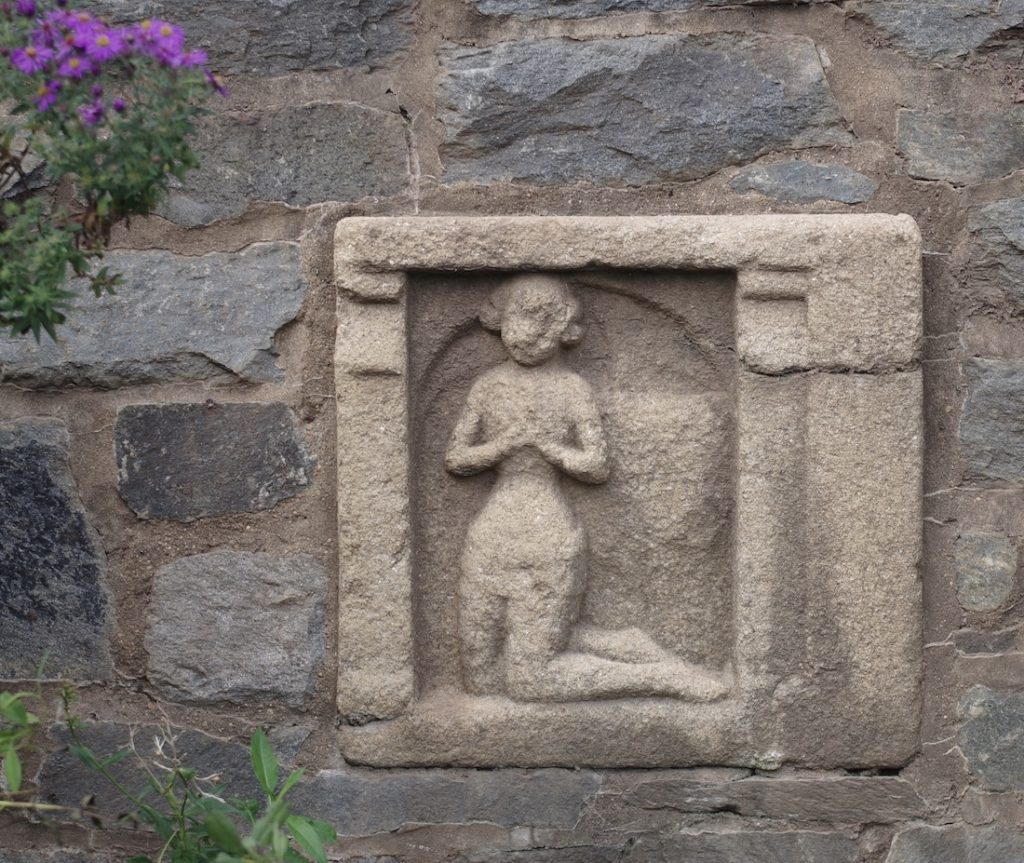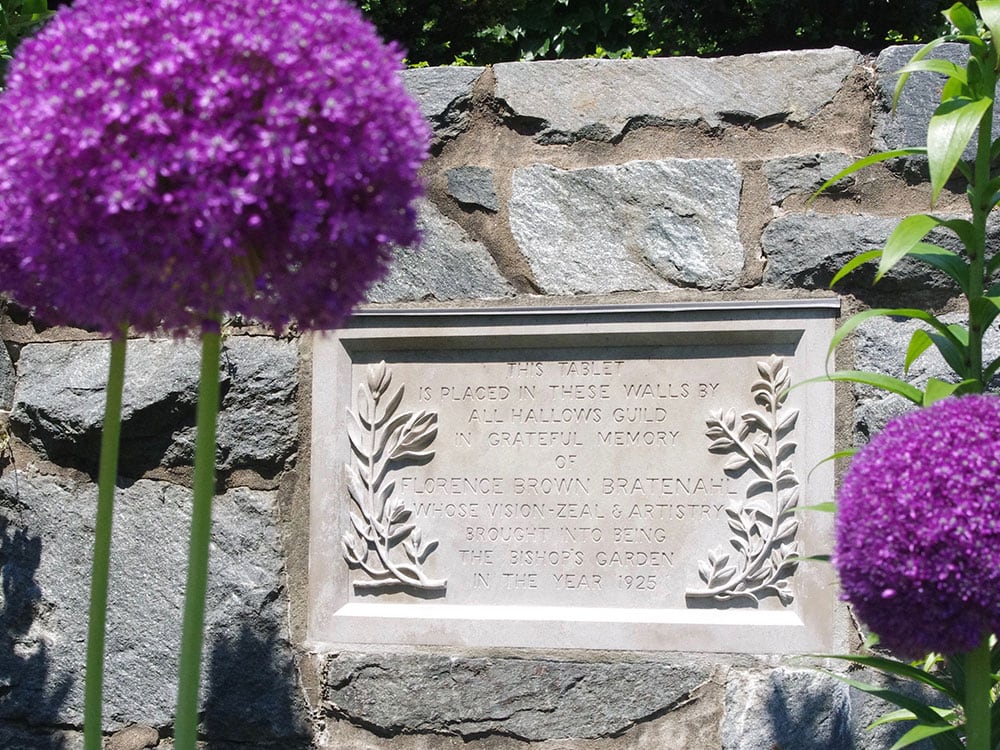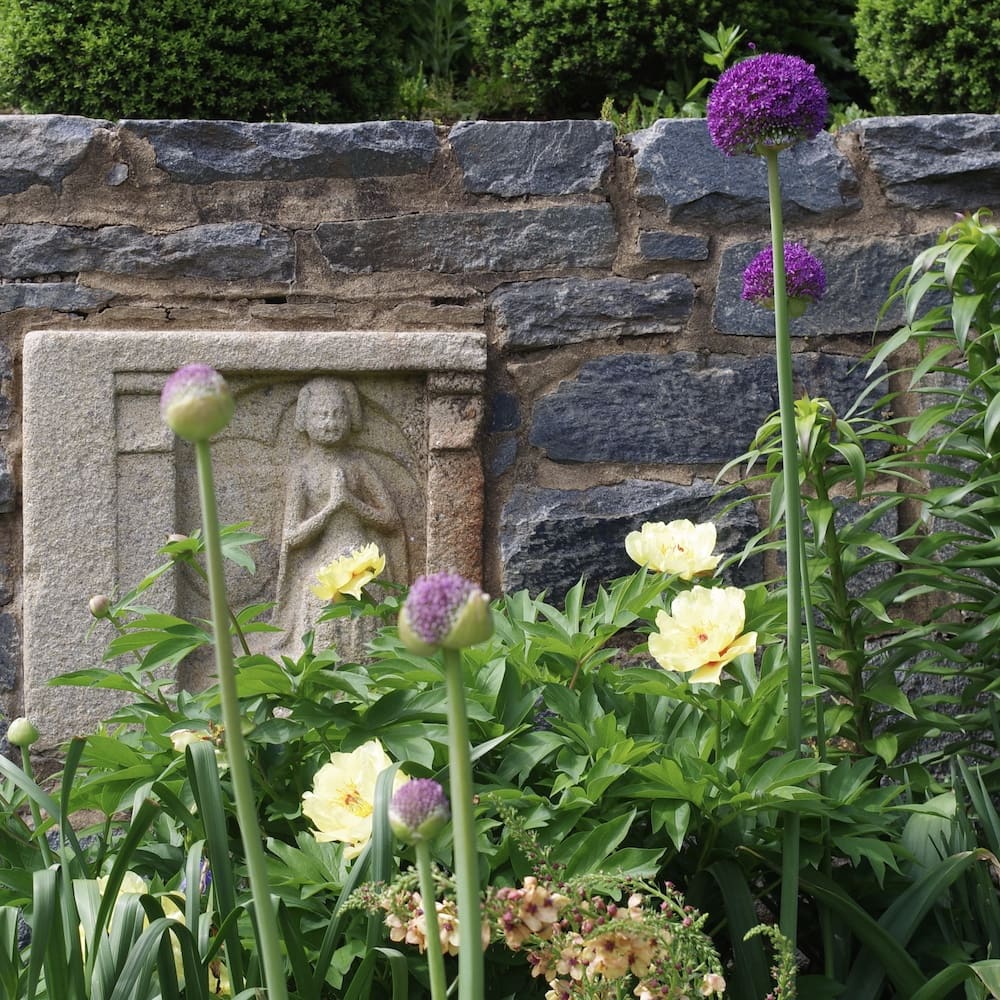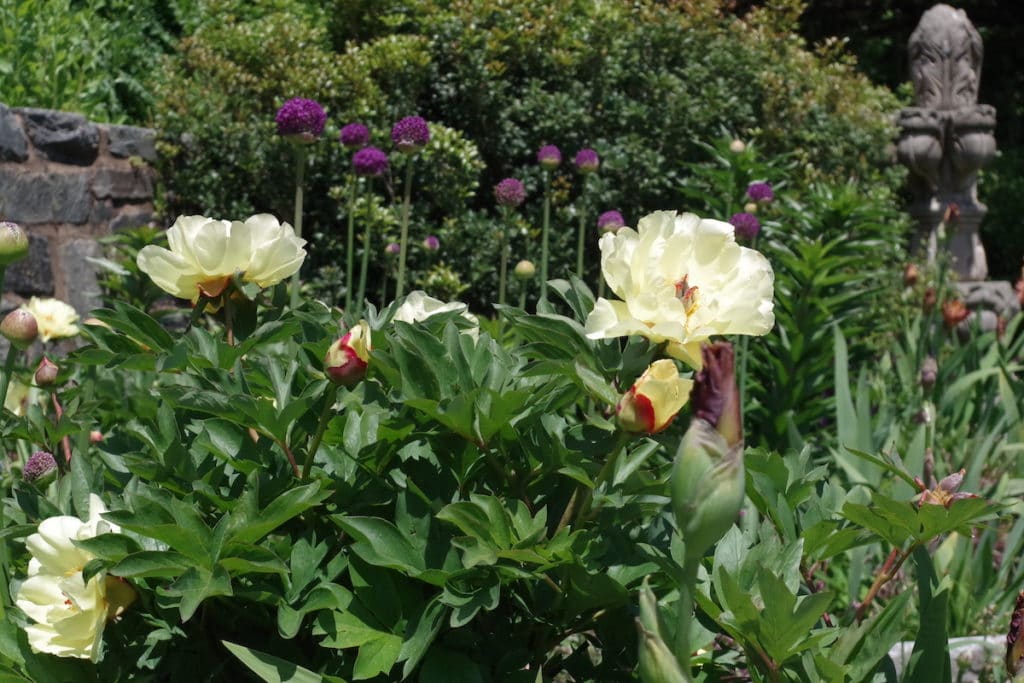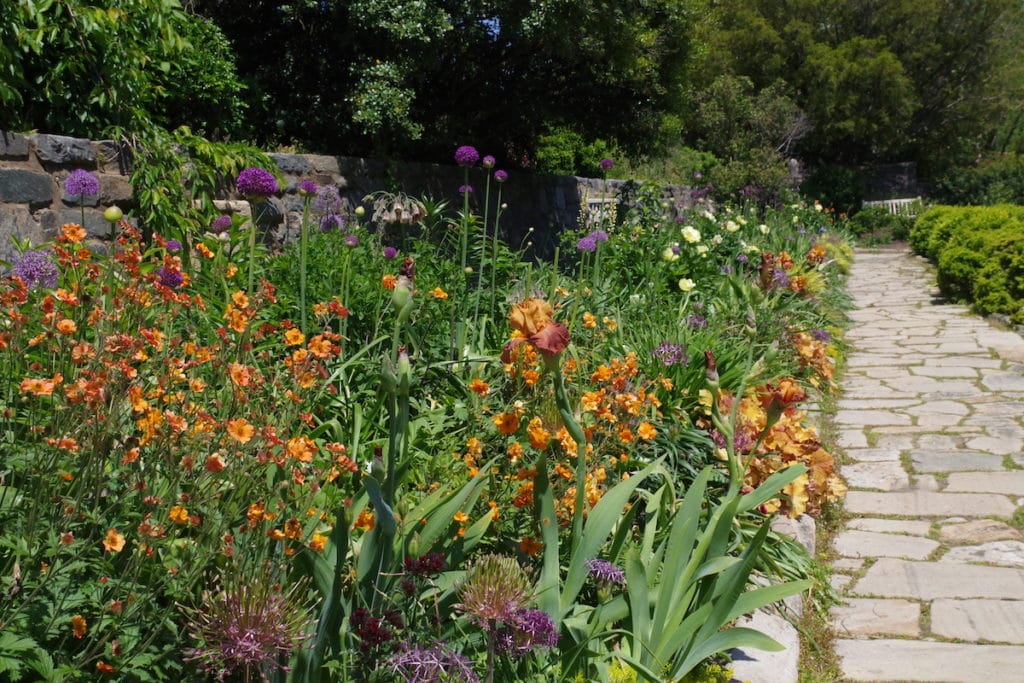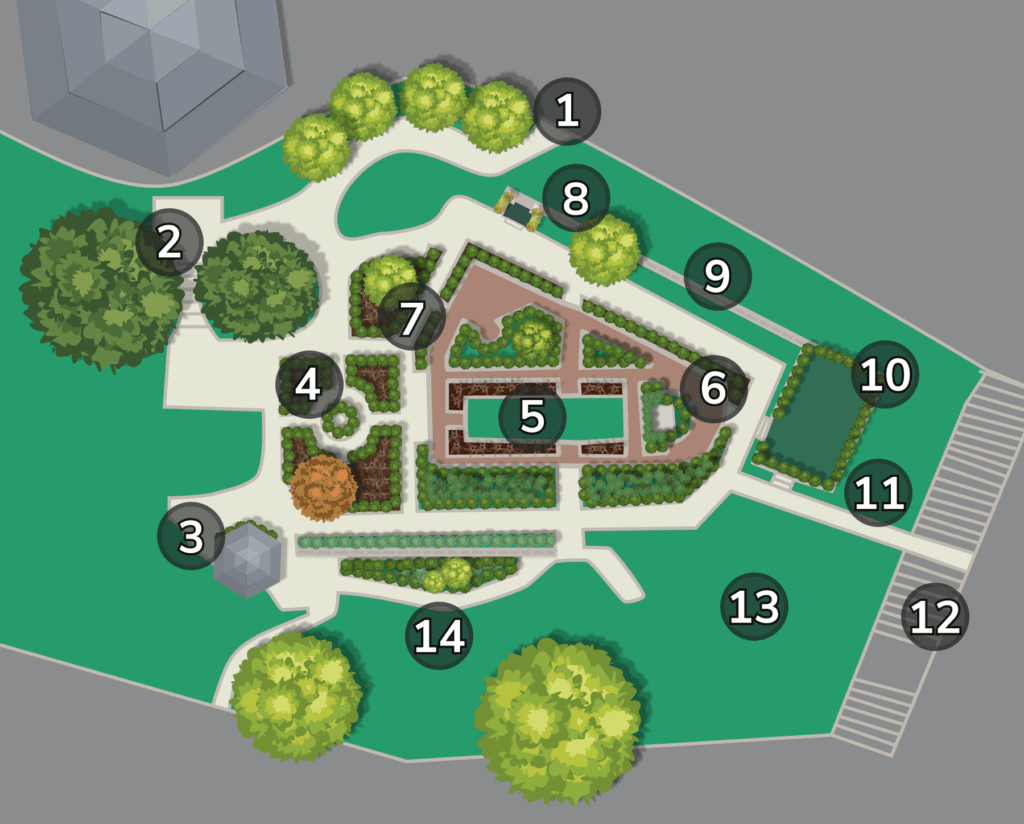
No. 9 On The Map
Upper Perennial Border
The Upper Perennial Border is framed by a stone wall containing three 15th-century bas-relief panels depicting martyrs and saints along with several memorial plaques. Perennial plants that bloom in warm hues grow between the wall and a stone walk. At the west end of the border is the Pool of St. Catherine, and at the east end grows a rare medlar tree, often seen in monastic gardens.
In 1929 Florence Bratenahl, chair of the All Hallows Guild Garden Committee, wrote: “Just below the Cathedral itself, is a border with all the charm of an old English garden. The flagstone walks and the old copings are from George Washington’s Aquia Creek quarry: historic discards rescued to live again.”
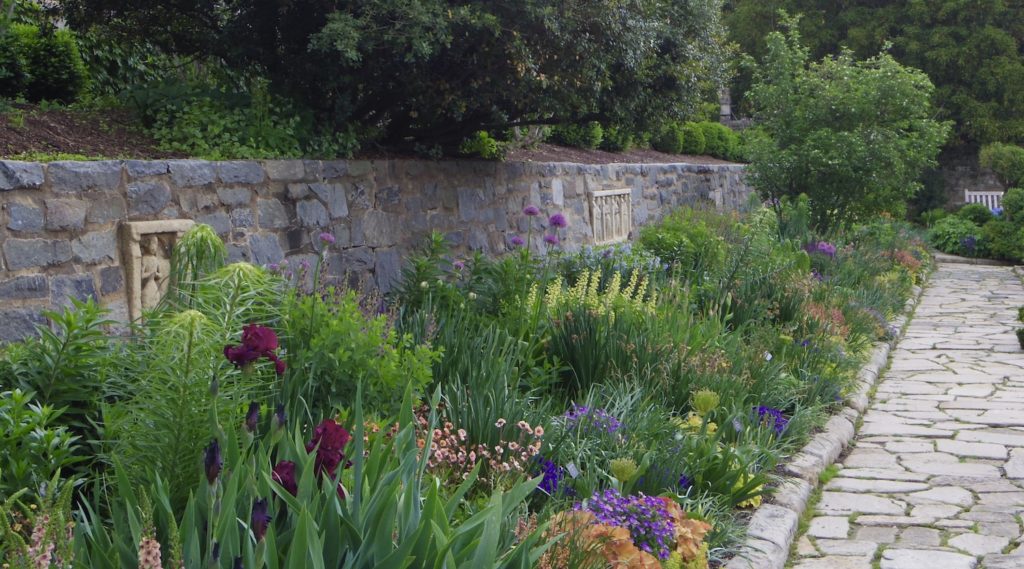
In the wall behind the flower bed, just to the east of St. Catherine’s Pool, is the 15th century granite panel depicting a kneeling female figure with hands clasped in front of her chest. It was an acquired, along with the other bas-relief panels in the wall, from the collection of George Grey Barnard. The panel was dedicated in the Bishop’s Garden on May 22, 1931 and was a gift of the Junior Gardeners of Philadelphia in memory of Eleanor Pepper Newbold, their first president.
Near the center of the wall is a four-pane granite bas-relief that was installed in 1931 as a gift of the Noanett Garden Club of Massachusetts. Florence Bratenahl described the bas relief: “Saints, martyrs, heroes – this being the last of a number of museum pieces acquired from the noted Gothic collection of George Grey Barnard.”
A bluestone plaque, dedicated in 1988 to Alice Trowbridge Strong, is located in the wall near the Medlar (Mespilus germanica) tree. Mrs. Strong was a chair of All Hallows Guild’s Garden Committee and designed the Rosalind Wright Memorial fountain (which is located in the lower wall of the Bishop’s Garden near the Prodigal Son statue).
A plaque in honor of Florence Brown Bratenahl, who worked tirelessly to create a Garden for the Ages, was dedicated on May 8, 1957. By 2006 the the original plaque had become badly deteriorated and All Hallows Guild replaced it with a replica carved from Indiana limestone. Mrs. Bratenahl, an early and prominent member of All Hallows Guild, succeeded Frederick Law Olmsted, Jr., as designer of the Bishop’s Garden and led the fundraising for the Garden’s construction.
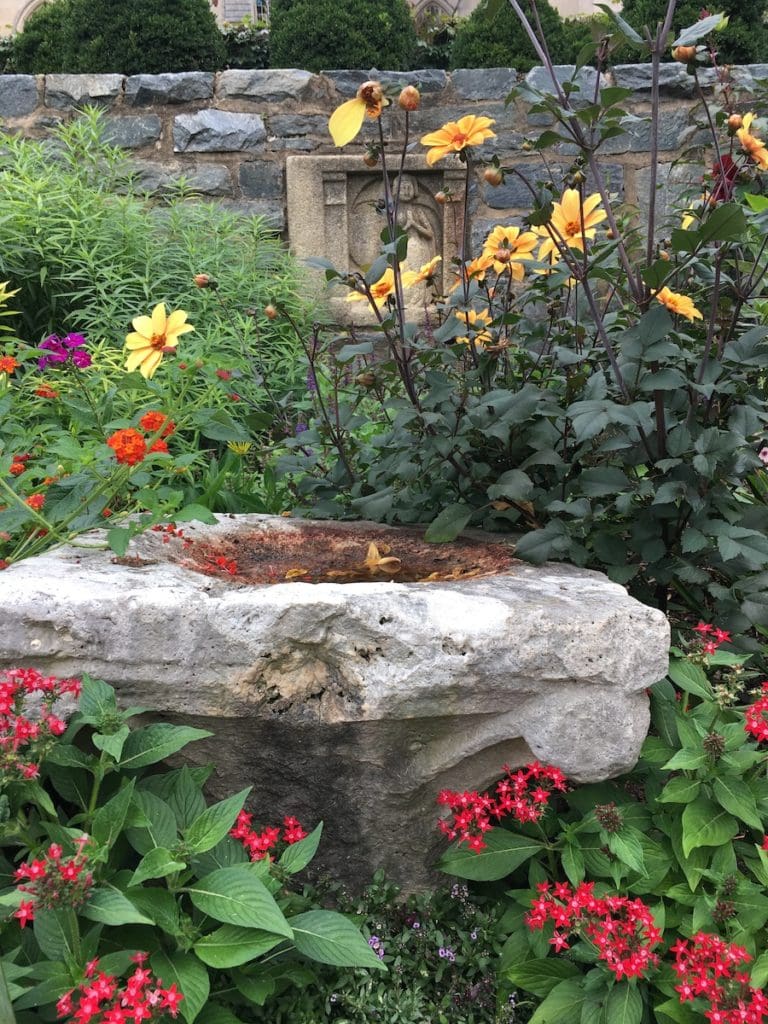
On the east end of the Upper Perennial Border is a 12th-century column capital that serves as a birdbath. It is a relic from the now demolished Abbey of Saint-Marcel-lès-Chalon in France. A 15th century granite bas-relief of a kneeling figure is located in the wall behind the capital. The font and bas-relief were installed in 1928 and were given as a gift to the garden from Miss Edith Notman of New York in memory of her father and mother, Peter and Jane C. Notman.
Among the plants that bloom in the Upper Perennial Border are: allium, peonies, hellebores, lilies, aster, dahlia, and tickseed – creating a colorful display in spring, summer and fall.

The stone path that follows the edge of the Upper Perennial Border leads to the garden room at the northeast corner of the Bishop’s Garden known as the Finial Garden.
Help Us Keep The Gardens Growing
Partner with us to ensure that the 57 acres of gardens and grounds surrounding Washington National Cathedral continue to be a haven of peace and refreshment in the midst of the Nation’s Capital.


